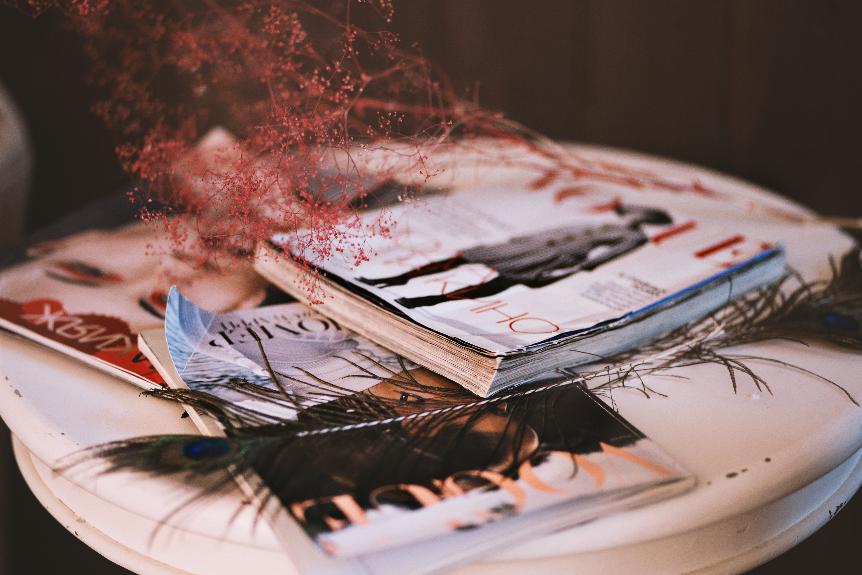No products in the cart.

In the 1980s, you couldn't escape the influence of fashion magazines. They shaped the aesthetics of the decade, dictating what was trendy and stylish.
From the rise of fashion editorials to the iconic fashion photographers of the time, these magazines were the gatekeepers of fashion.
They showcased the latest trends, inspiring individuals to embrace bold styles and experiment with their looks.
In this article, we delve into how fashion magazines shaped the aesthetic landscape of the 1980s.
In the 1980s, fashion magazines became an indispensable source of style inspiration for you, shaping your aesthetic choices and defining what was considered trendy. The rise of fashion magazines in this era had a significant impact on the fashion industry as a whole.
These magazines played a pivotal role in disseminating information about the latest trends, designers, and brands. They showcased fashion editorials, featuring models adorned in the season's hottest looks, which influenced your fashion choices. The glossy pages were filled with photographs, articles, and advertisements that showcased the latest fashion collections.
These magazines also provided insights into celebrity style, offering a glimpse into the wardrobes of icons like Madonna and Princess Diana. The rise of fashion magazines in the 1980s revolutionized the way people consumed fashion, making it accessible and aspirational for the masses.
Fashion magazine editorials played a pivotal role in shaping your aesthetic choices during the 1980s. These editorials not only showcased the latest fashion trends, but also influenced your perception of what was considered stylish and trendy. Through carefully curated fashion spreads, fashion magazines provided a platform for designers and brands to showcase their collections, creating a symbiotic relationship between the fashion industry and editorial content. The role of fashion magazines in shaping the aesthetics of the 1980s cannot be overstated, as they served as a source of inspiration and aspiration for readers. Collaborations between fashion magazines and the industry allowed for the dissemination of new ideas and trends, ultimately shaping your fashion choices and defining the iconic aesthetic of the 1980s.
| Fashion Magazines | Fashion Industry Collaborations |
|---|---|
| Vogue | Calvin Klein, Giorgio Armani |
| Elle | Ralph Lauren, Yves Saint Laurent |
| Harper's Bazaar | Versace, Christian Dior |
| Cosmopolitan | Karl Lagerfeld, Marc Jacobs |
The creativity and vision of renowned photographers greatly influenced the visual landscape of the 1980s fashion industry. Their iconic images captured the essence of the era, shaping the way we perceive fashion today.
In the 1980s, fashion photographers collaborated with celebrities to create memorable and groundbreaking images. One such collaboration was between photographer Richard Avedon and supermodel Cindy Crawford. Their work together produced some of the most iconic fashion images of the decade, showcasing the perfect blend of celebrity and fashion.
Additionally, fashion photographers in the 1980s pushed the boundaries of traditional fashion photography by embracing avant-garde fashion. Photographers like Helmut Newton and Guy Bourdin were known for their provocative and edgy aesthetic, challenging societal norms and redefining the concept of beauty in fashion.
Their bold and innovative work paved the way for future generations of fashion photographers.
As you explore the fashion trends and styles of the 1980s, you'll discover a vibrant and eclectic mix of influences that shaped the decade's iconic aesthetics. The 1980s were marked by bold and daring fashion choices, with fashion icons like Madonna, Princess Diana, and Michael Jackson leading the way.
Here are three key trends that defined the fashion of the decade:
These trends, along with many others, contributed to the distinctive and unforgettable fashion of the 1980s.
When exploring the influence of fashion magazines on 1980s aesthetics, it becomes evident that the advertisements within these publications played a significant role. Fashion advertising in the 1980s evolved to become more dynamic and captivating, with brands utilizing celebrity endorsements to enhance their campaigns. Celebrities such as Madonna, Brooke Shields, and Cindy Crawford were frequently featured in fashion ads, creating a powerful association between these icons and the products they endorsed. This strategy not only increased brand visibility but also influenced consumer behavior by creating a desire to emulate the style and glamour of these celebrities. The evolution of fashion campaigns in the 1980s brought a new level of excitement and aspiration to the industry, forever changing the way fashion brands marketed their products.
| Role of Celebrity Endorsements | Evolution of Fashion Campaigns |
|---|---|
| Enhanced brand visibility | More dynamic and captivating ads |
| Influenced consumer behavior | Increased excitement and aspiration |
| Created desire to emulate celebrities | Changed marketing strategies |
| Associated style and glamour with products | Revolutionized fashion advertising |
You faced major challenges in the 1980s, with economic struggles impacting fashion magazines. These obstacles required innovative strategies to attract readers and advertisers, while still shaping the aesthetics of the era.
To adapt to the changing technological landscape in the 1980s, fashion magazines had to navigate the emergence of digital publishing and the challenges of changing advertising strategies. They embraced new technologies to reach a wider audience and stay relevant in the industry.
Celebrities played a significant role in shaping the aesthetics of fashion magazines in the 1980s. They were often featured on covers and in editorial spreads, influencing trends and showcasing the latest styles. The influence of fashion editors and the role of models also contributed to the overall aesthetic.
In the 1980s, fashion magazines played a significant role in shaping the representation and inclusion of diverse individuals in the fashion industry. They showcased a range of models from different backgrounds, fostering a more inclusive and diverse aesthetic.
In the 1980s, fashion magazines were not immune to controversies and scandals. From photoshopping controversies to unethical practices, these moments revealed the darker side of the industry and raised questions about its influence on society.
